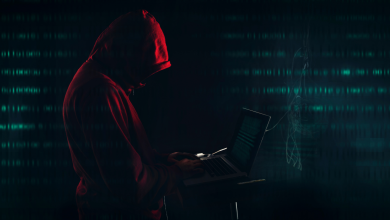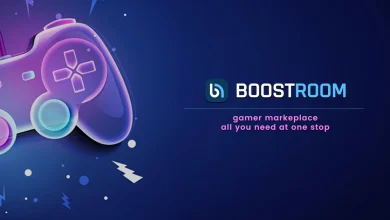AI in Art and Creativity: Exploring the Role of Generative Models

In a world where technology meets creativity, generative AI art is shaping up to be a fascinating phenomenon. It’s a blend of algorithms and artistic vision that challenges traditional artistic boundaries.
Generative AI Art is more than just a collaboration between humans and machines, it’s a revolution in the creative process itself. Fundamentally, generative AI involves algorithms, particularly Generative Adversarial Networks (GANs) and neural networks, to autonomously create original pieces of art. Unlike traditional methods where the artist’s hand guides every stroke, generative AI introduces a dynamic collaboration between human intent and machine intelligence.
The driving force behind generative AI Art is the concept of Generative Adversarial Networks (GANs). These networks consist of two parts – a generator and a discriminator – engaged in a continuous learning process. The generator creates images or content, mimicking real artwork, while the discriminator evaluates these creations, providing feedback to improve the generator’s output. This iterative loop results in the generation of increasingly sophisticated art, with the algorithm learning and evolving over time.
Generative AI Art represents a paradigm shift in how we understand the creative process. Artists use these algorithms to explore new forms of artistic expression, from painting and sculpture to multimedia installations. Generative AI produces art that surprises and challenges, often transcending what human hands alone can achieve. As artists integrate these technologies into their practice, the definition of creativity undergoes a transformation.
Evolution of Generative AI in Art
The evolution of Generative AI in the art world marks a transformative journey from early experiments to its current status as a revolutionary force. Early AI-generated art attempted to replicate artistic styles, laying the groundwork for the flourishing field of AI and artistic expression.
As technology advanced, AI art generators based on GANs catalyzed a paradigm shift. These generators brought a dynamic interplay between AI and the artist, with the AI learning from existing art datasets and creating novel pieces while the artist directs the process.
One significant milestone in Generative AI Art’s evolution is the democratization of AI art generators. As these tools became more accessible, artists of diverse backgrounds found themselves equipped with digital palettes that transcended traditional constraints. The line between amateur and professional blurred, enabling anyone with creativity to engage with AI and bring their visions to life.
Significance of Generative AI in Unleashing Creativity
Generative AI has the potential to redefine creativity by liberating artists from convention. It introduces an element of randomness and unpredictability, encouraging artists to embrace the unexpected and break away from artistic norms. This collaboration between human creativity and AI empowers artists to experiment with new ideas and styles.
Generative AI acts as an augmentation of artistic capability, amplifying creativity and democratizing the act of creation. It challenges traditional notions of authorship, blurring the lines between the artist’s hand and the algorithm’s output. As AI becomes a co-creator, it prompts a reevaluation of the role of the artist in the creative process.
The Creative Process with Generative AI
The creative process with generative AI is a revolution in artistic expression. Artists collaborate with algorithms, guiding them to produce art that resonates with their vision. This interaction is symbiotic, with the AI suggesting possibilities and adding unpredictability to the process. Artists customize the algorithm’s parameters to sculpt art that reflects their artistic identity.
Breaking Traditional Boundaries Through AI
Generative AI in the art industry challenges traditional norms, opening doors to uncharted territories. It enables artists to experiment with unconventional ideas and blend diverse influences, bridging the gap between genres. This break from tradition redefines artistic styles and expands the horizons of creative exploration.
Challenges and Ethical Considerations in Generative AI Art
While generative AI Art offers creative possibilities, it also presents challenges and ethical dilemmas. Ownership and authorship issues arise as AI becomes integral to the creative process. Bias in AI-generated artwork raises concerns about representation and inclusivity. AI artists must navigate these challenges responsibly, ensuring transparency and ethical conduct.
The Future of AI-Generated Art
As generative AI Art continues to evolve, technological advancements will drive innovation in AI-generated artwork. AI art is poised to integrate into mainstream culture, reshaping the artistic landscape. The next generation of artists will leverage AI to explore new aesthetic frontiers, empowering diverse voices and democratizing art.
How Generative AI is Democratizing Art
Generative AI democratizes art by breaking down barriers to entry and amplifying diverse voices. It empowers artists from various backgrounds to infuse their unique identities into the artistic narrative. The next generation of artists will navigate the evolving intersection of technology and creativity, ushering in a future where art knows no bounds.
Inspiring Creativity: The Significance of AI Certification in the Era of Artistic Innovation
In today’s era, where artificial intelligence is shaping the world, obtaining an AI certification is of utmost importance for aspiring AI developers and prompt engineers. A comprehensive artificial intelligence certification equips individuals with the necessary skills and expertise to navigate AI-driven artistic expression. These AI prompt engineering certifications and courses not only provide in-depth knowledge of AI algorithms and techniques but also offer hands-on experience in utilizing AI tools for creative purposes. By completing an artificial intelligence developer certification, individuals can position themselves as proficient AI prompt engineers and developers capable of harnessing the transformative power of generative AI in art. Such certification not only validates one’s proficiency but also opens doors to exciting opportunities in the burgeoning field of AI, where skilled professionals play a pivotal role in pushing the boundaries of creativity and innovation.
In conclusion, Generative AI is reshaping the artistic landscape, challenging traditional boundaries, and democratizing art. As technology continues to advance, the fusion of human creativity and AI promises to inspire creativity for years to come.
For individuals aspiring to explore deeper into the world of AI-driven creativity, Blockchain Council offers comprehensive prompt engineer courses and generative AI certification. Blockchain Council is an authoritative group of subject experts and enthusiasts evangelizing blockchain research and development, use cases, products, and knowledge for a better world. With companies increasingly adopting artificial intelligence, Blockchain Council provides comprehensive courses and certifications to equip individuals with the skills and knowledge necessary to excel in this evolving landscape.



